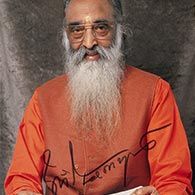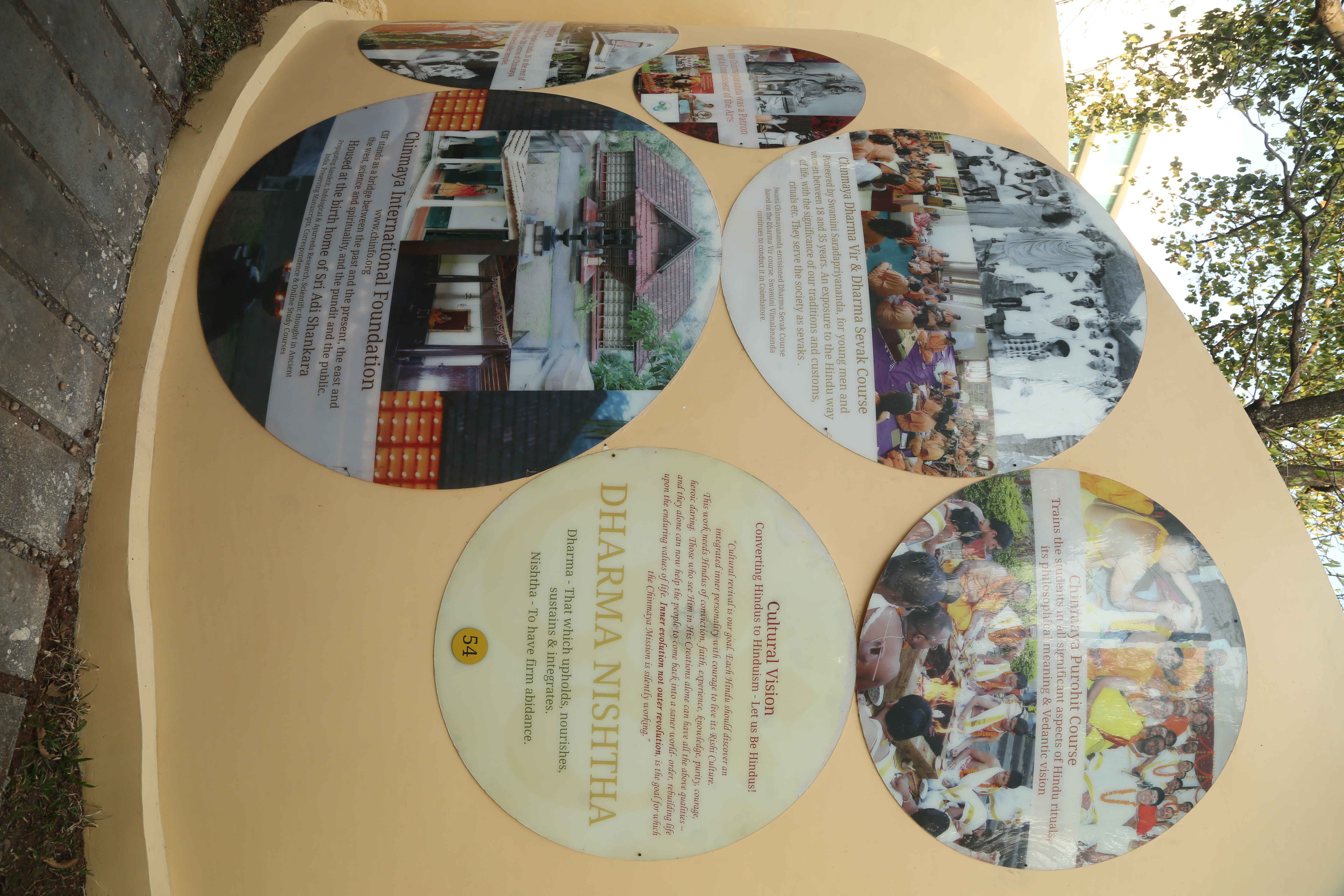Converting Hindus to Hinduism - Let us Be Hindus!
Cultural revival is our goal. Each Hindu should discover an integrated inner personality with courage to live its Rishi Culture. This work needs Hindus of conviction, faith, experience, knowledge, purity, courage, heroic daring. Those who see Him in His Creations alone can have all the above qualities – and they alone can now help the people to come back into a saner world- order, rebuilding life upon the enduring values of life.
Inner evolution not outer revolution, is the goal for which the Chinmaya Mission is silently working.
Dharma - That which upholds, nourishes, sustains & integrates. Nishtha - To have firm abidance. To be a protect & promote Hindu Dharma and to be a proud and practicing Hindu, Swami Chinmayananda envisioned the Chinmaya Internation Foundation, Temples, Chinmaya Purohit Course, Chinmaya Dharma Vir & Dharma Sevak Course. He also patronised Art & Culture
Chinmaya International Foundation(CIF) – www.chinfo.org
CIF stands as a bridge between the past and the present, east and the west, science and spirituality, and the pundit and the public.
Housed at the birth home of Sri Adi Shankara(the Melpazhur mana)
Projects, Programmes & Activities of CIF:
Propagating Sanskrit, Anusaaraka, Indological Research, Scientific thought in Ancient India, Preserving Manuscripts & palm leaves, Ayurveda research, Teaching scripts of various languages, Workshops, Publications Correspondence Home Study Courses in Vedanta & Sanskrit, E-Vedanta Courses
Temples
A temple is a social center and must become a place of cultural revival.
It is a sacred place of reverence(Sangam) where Devotion of the mind and Reverence of the intellect and Self- Knowledge(Ganga,Yamuna & Saraswati) come together.
Swami Chinmayananda established 29 temples in India, 26 in the rest of the world and shrines/altars in most of the 300 Centres of Chinmaya Mission. He resotred the glory of several older temples.
Chinmaya Purohit Course
The course trains the students in all significant aspects of Hindu rituals and also illumines the philosophical meaning & Vedantic vision behind the rituals.
Conducted at Chokahalli, Karnataka & Coimbatore, Tamilnadu. Students who complete this training are called - Chinmaya Veda Putras
Chinmaya Dharma Vir & Dharma Sevak Course
Dharma Vir course was pioneered by Swamini Saradapriyananda.
The course is intended for young men and women between 18 and 35 years with an aim to give them an exposure to the Hindu way of life, complete with the significance of our traditions and customs. The students are also trained in rituals, chanting, taking classes etc. and serve the society as sevaks after the course.
Swami CHinmayananda envisioned Dharma Sevak Course based on the Dharma Vir course. He categorised it into DSL & DSH (Dharma Sevak Lower & Higher) Course. Swamini Vimalananda continues to conduct the Dharma Sevak Course in Coimbatore.
Patron of Art & Culture
Swami Chinmayananda was a patron and a Connoisseur of the arts - Dance, Music, Sculptures, Theatre, Concerts…
A Master with Maestros: Renowned artists like Pandit Ravi Shankar, Pandit Bhimsen Joshi, M.S. Subbulakshmi, Hari Prasad Chaurasia, Mrinalini Sarabhai, Pandit Jasraj, K.J. Yesudas, Balamuralikrishna, Purushottamdas Jalota, Dr.Padma Subrahmanyam & Anup Jalota performed before him.
Swami Chinmayananda said:
Many of our saints reached Truth through singing for Him. See HIS Dance Everywhere! While Acting think it is real. In real life, act well.
For more information about Chinmaya International Foundation, please read - “Unto Research”
Design Notes
Sandeepany Sadhanalaya - Vision & Features
The exhibit is designed as a walk-through installation. It is derived from three key aspects of the Sandeepany Sadhanalaya logo which are; a lamp, a swan and a lotus. The three sub-sections are represented through these three aspects of the logo. Each sub-section is a combination of a visual montage panel and an installation form. The first sub-section presents the vision of the institution through a visual montage panel. The flame of the lamp in a stylized form is used for the installation, which highlights the institutes’ main features.



